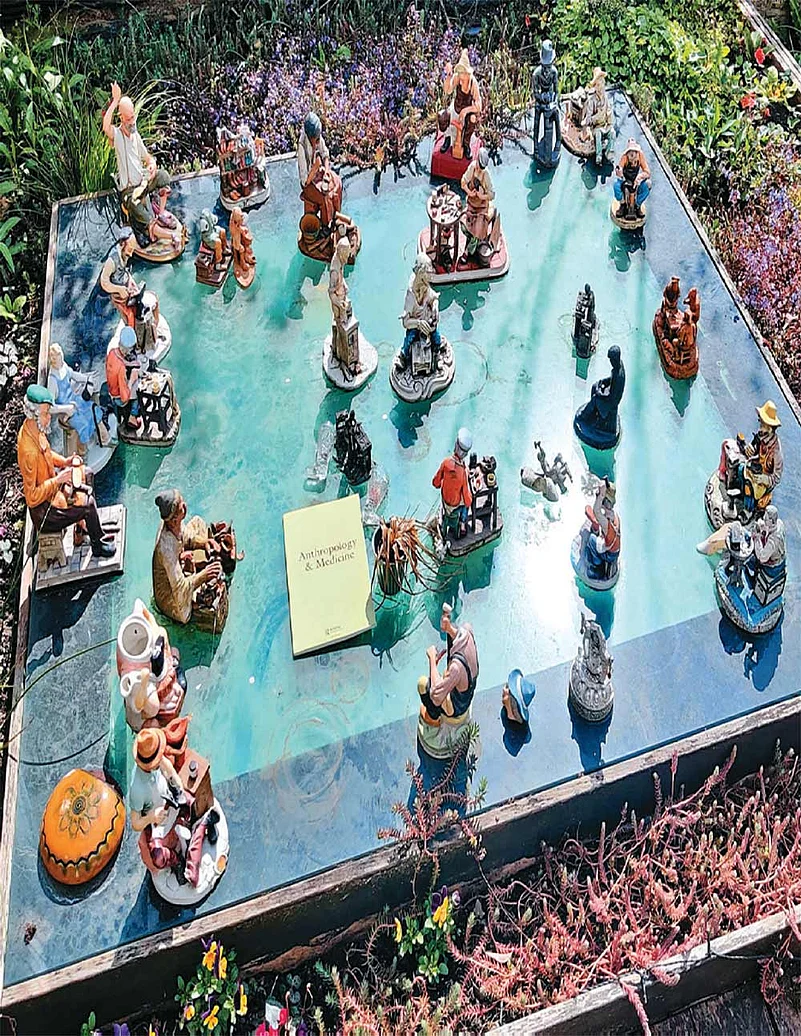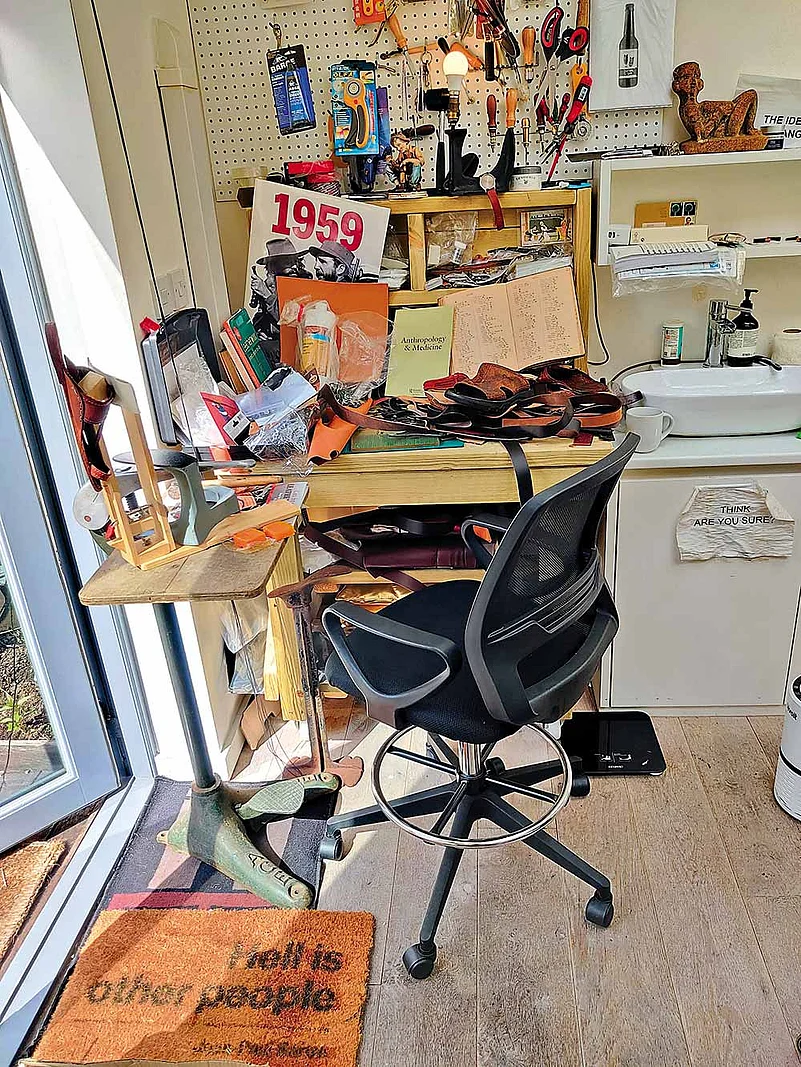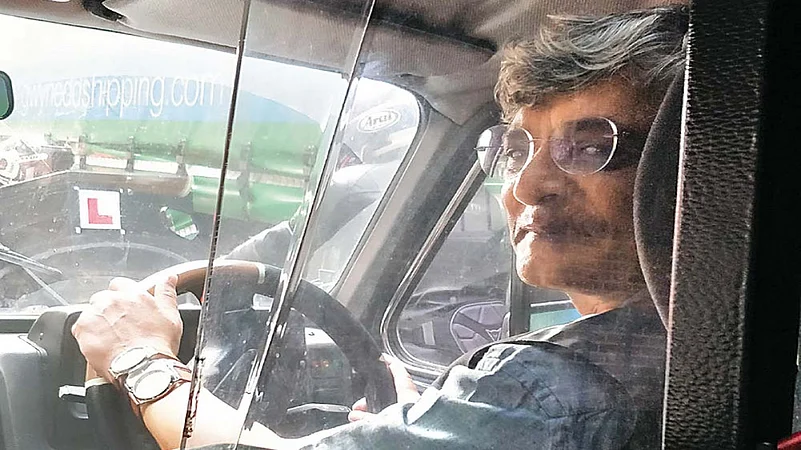When we think of caste, we usually think of impersonal factors—social hierarchies, structures, politics—not of the individual, the subject upon whom these forces act. And the individual is the theoretical and practical domain of Dr Sushrut Jadhav, professor of cultural psychiatry at the University College London and founder-editor of the Anthropology & Medicine journal. He describes himself as a street psychiatrist and a clinician-anthropologist. That means he works with people on the streets—his theory flows from practice, and life. Dr Jadhav was on Outlook’s list of ‘50 Dalits Remaking India’. To mark the anniversary of B.R. Ambedkar’s Annihilation of Caste on May 15, 1936, he talks about his work—how he brings psychiatry into the act of analysing forms of social oppression—in a conversation with Sunil Menon. Excerpts:
Straddling an interdisciplinary cusp between psychiatry, medicine and anthropology, being founder-editor of a global journal, being named by Ashis Nandy as an intellectual to look out for...how and where did this journey begin?
I would rather not see myself as proceeding through a journey. In embracing a notion that we might say emanates from Buddhism, we live in a situation of timelessness: there is no beginning and no end. We are part of a continuing flow. So, I would rather prefer to think of my journey as marked by certain events, certain ruptures—a very interesting set of events that have shaped the way I have developed my identity, and also my professional work as a clinician working in London and India, as well as my academic job. These ruptures, I would say, generated a kind of double vision that, in the jargon of neurologists, is known as diplopia or a double vision. I’d like to call it a kind of cultural diplopia: an intellectual double vision of the cultural psyche that you experience and live. Having grown up in both rural and urban India—in a Dalit family from Maharashtra who were traditionally Chamars, cobblers—it established a kind of grounding and sensitivity in me: to exclusion, to social oppression, humiliation, and stigmatising experiences. I went through the whole gamut: informal lessons from a Muslim cleric as a child in Erode, Tamil Nadu—quite the hamlet then—and subsequently, formal Christian convent and public schooling across several metropolitan cities in India, Kanpur, Delhi, Cuttack, Agra, Bombay, Bangalore, Madras. And then, training at premier academic institutions: medical degree from Grant Medical College, Mumbai, post-graduation in psychiatry at NIMHANS, Bangalore. This imparted in me a sense of esteem, a vision, perhaps a standing, and flexibility. I might now call myself a post-colonial elite of sorts.

How many cobblers does it take to generate a radical text? Cobbler figurines from around the world, collected by Dr Jadhav and installed over his study.
You mention ruptures. Would you elaborate…
These have been lived experiences with marginal groups that cut across India and England. These involved a stint when I was very young, age 17, with Bombay’s dreaded underworld—at the same time educating myself through reading lists copied from Nissim Ezekiel’s library borrowing card at Max Mueller’s, Bombay. Subsequently, dialogues and interactions with ex-Naxalites in Assam, working with Dalit peoples in Pune, Bombay, Delhi, with manual scavengers in Uttar Pradesh, and in parallel, over the last 20 years, with the ‘homeless-ed’ in inner London. That has aided a more horizontal growth. In some ways, these were contrasting experiences, generating in me what I call cultural-psychological diplopia, which almost always interrogates notions of space and place, ideas of belonging and unbelonging, and continuously connects the centre with the margin. Here, juggling with multiple identities within myself aided the crossing of psychological boundaries and borders, and most importantly, allowed for a constant subversion, or an inversion, of oppressive domains. These mosaic experiences provided me with both emotional skills and intellectual resources, fostering a natural engagement with my current discipline, cultural psychiatry. The mentally distressed are not so dissimilar from the ‘untouchables’. I hope to put out more details if a brave publisher was keen to hear me through my words, not their vocabulary.
‘Cultural diplopia’… could a natural, cultural subject in India or anywhere else inhabit such a condition?
Absolutely. It’s a general abstraction, applicable universally. This is something I do in my clinical work with people in marginalised spaces. These notions of space and place, of belonging and unbelonging, of location and dislocation, being at the centre or the margin, are something that requires anyone to think through and route themselves through these anchors, so to speak, so that it allows them to interrogate their own identities and the ecologies they inhabit.
That’s a fairly diverse group of subjects…the Bombay underworld, ex-Naxalites, manual scavengers, the homeless in London. Where do you find a common ground of experience among them?
Well, whether consciously etched out or not, there’s an abstract link. That’s perhaps between the centre and the margin. The margin is not just a static periphery. Without the margin, there cannot exist a centre. In some ways, margins define the centre, and can be a very powerful space for someone to reclaim their identity and invert it. The more tangible connection is the experience of those who are considered to be the scum of the earth, who have been systematically oppressed, who have experienced repeated humiliation and stigma every day in their life, and not been allowed to participate in everyday life to the fullest extent in a way that should be possible in a just society. In my work, the anti-racist interventions and intercultural therapy I provide here, and in the work that I continue to do with both the Dalit population and other communities in India, there’s something that is very shared: an experience of being forcibly dislocated, disconnected, demerited, dehumanised…to the point that they’re rendered as having the properties of an animal—in the sense of the savage animal, not the animal invested with its aesthetics.
Of late, you have transferred some of your therapeutic concerns from the margins to the centre...from those who experienced distress to those who oppress. What would you have to say about their subjectivity?
That’s a huge question, but I wish to address the oppressor, myself to start with. The relationship between the marginalised, oppressed subject and the central, oppressive person is a complicated dyad. It may be politically incorrect to say so, but the oppressed cannot exist without the oppressor and vice versa. The oppressor has no identity without the oppressed. Both, in some ways, contribute to this relationship. For me, what’s important is not necessarily the oppressor out there, identified in some concrete fashion, but the oppressor we have internalised, and the sophisticated dialogue between the oppressed and oppressive aspects within ourselves. This is a part of my therapeutic work, a way in which I help people who would want to address their distress relating to, say, caste identity—to try and not necessarily locate the oppressor as a concrete person out there, but to examine and reflect on the internal reference of the oppressor within themselves; to be able to have a dialogue and to generate a critical consciousness, which allows them to nourish a third self that can gaze upon themselves, that allows them to move away from that essential subjective trap they are caught in. I am not the inventor of this idea of the relationship between the oppressor and the oppressed. Indeed, this has come from the pioneering work of liberation psychologists starting from the Latin Americans Paulo Freire, Augusto Boal, and most notably, thinkers from Africa… the seminal work of Franz Fanon, for instance, and a lot of recent scholarship that’s contributed to this continuing dialogue and development of liberation psychologies, and certainly shaped my understanding and therapeutic interventions. And all of this is preceded by the most amazing, most powerful canonical work available to us, the basis of it all for me: B. R. Ambedkar’s Annihilation of Caste.
For a thinking, feeling Dalit subject, historically a kind of defeatism was given as a birthright. From there to now, trying to succeed…how does one find the tools to fight the good fight in such a way as to not merely inhere power, but to eliminate the very seed of power?
Firstly, we cannot think of a utopia where there is no oppressor or oppressed. That’s out of the question. That dyad will continue across cultures and time, across societies. As a clinician and researcher, I work with people distressed by their caste identity. These are not always Dalits…there are also people from other caste backgrounds, including Brahmins. What I can perhaps offer are both interventions and questions, in the direction of trying to see what can I do as a psychiatrist and anthropologist to free people from day-to-day humiliation, psychological violence, the sense of unbelonging that society generates in you. How can I heal these kinds of wounds? I don’t promise some kind of a fix, I don’t use chemicals or medications. I enter into a dialogical journey with my subjects, where my wounds speak to their wounds and vice versa. My power speaks with their sense of social defeat. This is a co-constructed journey where I try to see if I might be able to give them a certain sense of coming to terms with what has happened to them historically, using historical and cultural memories to fashion tools that might equip them to deal with their current lives. Because power is not something you can spot out there. Power is invisible, it gets actualised, like culture, in the interaction between a person and another person, or with the institution they relate with. The dynamics of this interaction generates the nature of power—the notion of who is superior, who is not so superior. Liberation therapists or liberation thinkers seek to develop methods and frameworks to try and see how we can create a dialogic space which displaces that. It’s a healing encounter that does not have a formula of some kind—we have no panacea. It requires individual rebellion, the development of critical thinking and a consciousness that’s at once social, psychological and political. For us, there is only the trying, of venturing into the interstitial spaces of everyday life, the micro spaces of oppression in our lived experiences, to address those small acts that accumulate to become toxic to us. Cultural psychiatry doesn’t mean I am providing healing to large communities or groups of people. I work with individuals, but I try and locate the individual within the culture. And I try and locate culture within the individual.

Dr Jadhav’s cobbler’s studio, started during the lockdown, which he sees as a personal attempt to escape the continuing threat of alienation.
How would you describe a psychology of marginality? What can open up the horizons of a person who has experienced crushing, serial oppression in life?
Sadly, many people succumb to a form of social-psychological defeat—understandably. Often that leads to tragic consequences…death through suicide. That’s the extreme end. But many people are continuously dying, a part of their psychic identity is being killed every day. These are people we can see them around in our routine interpersonal interactions. They might want to perhaps ask themselves, first of all, is the distress palpable enough for them to want to do something about it? To be able to recognise that they are distressed and reflect upon it…that’s the first step. After that, the territory is open. There is no one formula. Some turn to theology, to religion, seek conversion, I don’t mean conversion in the concrete sense of a religious conversion but a conversion of identity. These conversions don’t take place, obviously, at an individual level, but in the everyday, interstitial spaces of multiple, creolised dialogues and interactions with institutions and individuals. Others might want to perhaps not do something about it. Yet others choose avenues they find more productive. We have had the example of people who have chosen to write their accounts—Dalit autobiographical accounts, for example, are a very rich source for people who might want to express themselves, their anguish, their suffering, and for the readers who find great inspiration reading such texts. There’s a huge scholarship—what in our jargon we call bibliotherapy—where many, many people have been inspired by the writings and life of Dr Ambedkar. Sometimes reading gives us a way to locate ourselves and also give ourselves healing templates. Most importantly, reading in the vernacular. The language we think, feel and experience in is a psychological language, not the more instrumentalised part of language. We must pay attention to the “othered” part. Our first languages matter. That’s the language in which our core identity is shaped, from infancy to adulthood. And it’s not just about caste: once you use caste as a peg to get into the inner world of people, there are many other issues, kinship conflicts, abuse, problems with work, all of these criss-cross in a way that makes it difficult to try and constantly frame them as a caste-related problem.
But staying on caste, doesn’t the perpetrator of violence also commit great violence on the self? He or she is the one who’s actually dehumanized—losing empathy, humanity. How would you talk about the psychology of the oppressor?
All of us, including the oppressor, have an experience of being the oppressed. So we cannot dichotomise. But it takes us to something very important. I might perhaps be extending myself from the field I work in, but it needs to be put on record. For me, it is very disturbing that someone in a Brahminical caste system, at the top end of the spectrum, thinks and conceptualises their sense of well-being based on a morbid belief system that requires an impure Dalit or an impure Other. How can this be ethically tenable? Does it not disturb someone that their identity—their feeling that they are healthy, mentally healthy—requires them to rely upon a belief system that entails others to be impure?
Would you call it a form of sickness?
It is a sickness, a toxic social sickness. As a psychiatrist, I would not call it a clinical psychiatric problem. But it’s a culturally constituted sickness. A collective cognitive distortion refracted through astigmatic lenses. Cognitive behavioural interventions may assist only if the entire edifice of caste rationality is accepted as a morbid cognition. I suspect most CBT therapists wouldn’t touch this with a bargepole although they may find effective therapeutic solutions if they reflect how their own caste identity shapes, reifies and reproduces such morbid cognitions. These reflections will be facilitated if the Clinic is not viewed as caste-neutral—a denial that protects mental health professionals who subscribe to Brahminical traditions from an imagined yet necessary fear of the Dalit. People at the top end of the Brahminical order must be willing to reflect deeply on why they need the necessary existence of an impure, demerited, subjugated human being. Caste is, on the one hand, a very potent psychological weapon for them to keep alive, to kill others: you need to consistently and systematically keep denigrating the Other to develop and sustain a sense of well-being, of pride, of dignity. On the other hand, it is a marker of great intellectual poverty along one crucial axis. We have had a couple of thousands of years of systematic thought, of philosophies and reflection—a tradition of the Vedas, the Upanishads, the Bhagavad Gita, the Sankara philosophies, the Bhakti movement, a rich tradition straddling philosophy, culture, scholarship. Yet, I am shocked that I’m unable to find any Brahminical introspection that engages with the idea of people being designated as impure, as taboo, as literally subhuman. It’s a form of psychological ethnocide that none of the texts I have read addresses. Those that do are edited out as they are considered contaminating these crafted, sanitised narratives. There seems to be a territory here of something altogether unthought. There are primordial givens in your field of thought beyond which there is never any thought. I would be bold enough to say, in this sense, that the Brahminical tradition and its so-called hallowed introspection is psychologically impoverished.
























